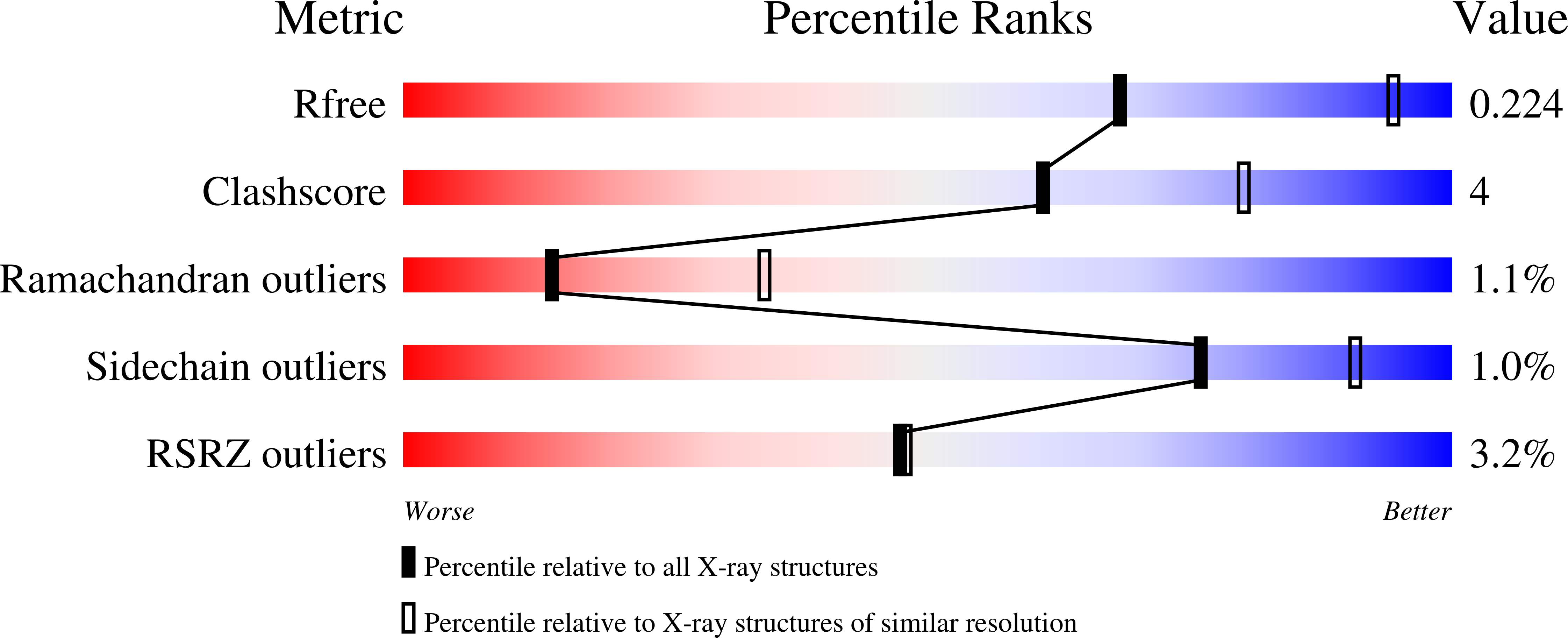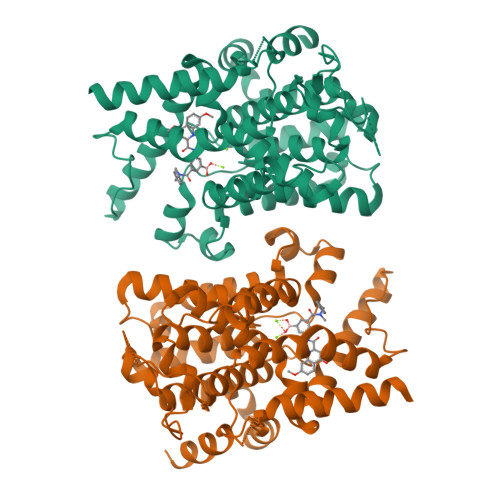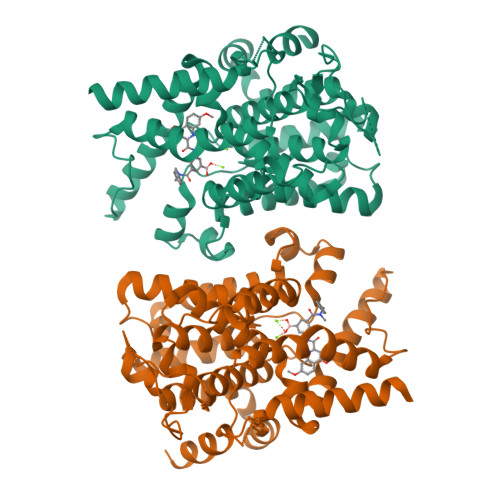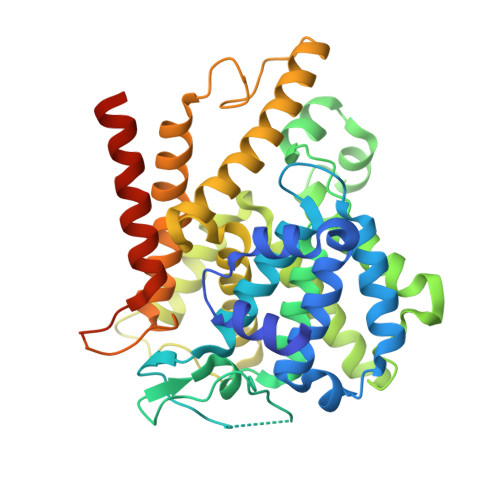Discovery and SAR Study of Boronic Acid-Based Selective PDE3B Inhibitors from a Novel DNA-Encoded Library.
Rowley, A.M., Yao, G., Andrews, L., Bedermann, A., Biddulph, R., Bingham, R., Brady, J.J., Buxton, R., Cecconie, T., Cooper, R., Csakai, A., Gao, E.N., Grenier-Davies, M.C., Lawler, M., Lian, Y., Macina, J., Macphee, C., Marcaurelle, L., Martin, J., McCormick, P., Pindoria, R., Rauch, M., Rocque, W., Shen, Y., Shewchuk, L.M., Squire, M., Stebbeds, W., Tear, W., Wang, X., Ward, P., Xiao, S.(2024) J Med Chem 67: 2049-2065
- PubMed: 38284310
- DOI: https://doi.org/10.1021/acs.jmedchem.3c01562
- Primary Citation of Related Structures:
8SYC - PubMed Abstract:
Human genetic evidence shows that PDE3B is associated with metabolic and dyslipidemia phenotypes. A number of PDE3 family selective inhibitors have been approved by the FDA for various indications; however, given the undesirable proarrhythmic effects in the heart, selectivity for PDE3B inhibition over closely related family members (such as PDE3A; 48% identity) is a critical consideration for development of PDE3B therapeutics. Selectivity for PDE3B over PDE3A may be achieved in a variety of ways, including properties intrinsic to the compound or tissue-selective targeting. The high (>95%) active site homology between PDE3A and B represents a massive obstacle for obtaining selectivity at the active site; however, utilization of libraries with high molecular diversity in high throughput screens may uncover selective chemical matter. Herein, we employed a DNA-encoded library screen to identify PDE3B-selective inhibitors and identified potent and selective boronic acid compounds bound at the active site.
Organizational Affiliation:
GSK, 1250 South Collegeville Road, Collegeville, Pennsylvania 19426, United States.


















